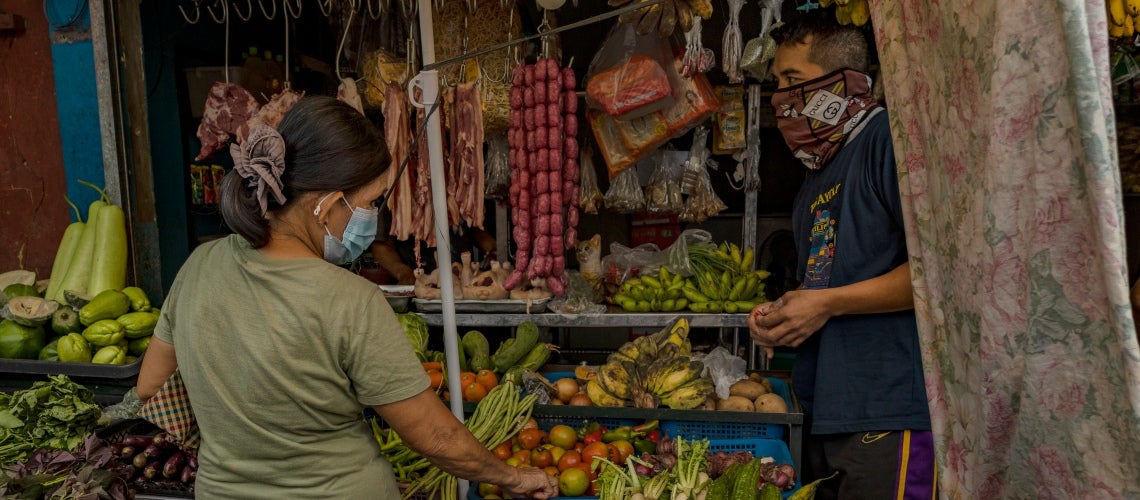 Developing countries implemented an unparalleled number of social protection policies to mitigate the COVID-19 pandemic’s impact on the labor market. Photo: Ezra Acayan / World Bank
Developing countries implemented an unparalleled number of social protection policies to mitigate the COVID-19 pandemic’s impact on the labor market. Photo: Ezra Acayan / World Bank
The world is still grappling with the COVID-19 pandemic’s unprecedented impact on labor markets. In 2022, the global unemployment rate and the global employment-to-population ratio remained 0.5 percentage points above and 1.5 percentage points below 2019 pre-crisis levels, respectively, based on ILO estimates. Still, while uneven, there has been a sizeable recovery since 2020. That year, the global unemployment rate had spiked by 1.2 percentage points and the global employment-to-population ratio had dropped by 2.5 percentage points compared to 2019.
To help mitigate the detrimental effects of the pandemic, developing countries implemented an unparalleled number of social protection policies. According to the COVID-19 Social Protection and Jobs Policy Inventory, about 3,436 jobs-related policies were implemented between January 2020 and January 2022. These policies encompass: 1) income support policies, such as public works programs or cash transfers to economically active persons; 2) active labor market policies, which include entrepreneurship support and training and placement assistance; 3) firm liquidity support policies, such as tax relief for firms, credit facilities, credit guarantees, corporate tax reductions and relief from social security contributions for firms; and 4) labor regulations defining formal work relationships.
Our new brief, Exploring Two Years of Labor Market Policy Responses to COVID-19: A Global Effort to Protect Workers and Jobs, highlights what we have learned about these policies, from firm liquidity support policies to individual cash transfers. Here are six takeaways from the brief:
1. Virtually all countries have implemented labor market policies to protect workers and firms from the effects of the pandemic
Labor market interventions have been a common policy response to combat the economic effects of the pandemic, with 99 percent of countries introducing at least one policy. These policies targeted individuals and households coping with income and job losses. Many of the policies focused on supporting formal firms, which is more easily justified when facing a severe but temporary shock. Based on the expenditure data available, average spending on policies benefiting firms was more than 3.5 times higher than for policies targeting individuals.
2. Countries spent far more resources on labor market policies than on any other type of social protection policy
Expenditure data is only available for 1,556 programs (about a quarter of the total) across 196 countries. While incomplete, these data show that countries allocated an average of $32.6 billion (3.6 percent of GDP) to labor market measures, as opposed to $12 billion (1.9 percent of GDP) and $400 million (0.2 percent of GDP) to social assistance and social insurance policies, respectively. High-income countries allocated on average the highest share of GDP towards labor market policies at around 6.1 percent ($76.1 billion). Low- and middle-income countries spent on average less than 2.5 percent of GDP. Most of this spending was allocated towards firm liquidity support.
3. Labor market programs benefited a modest share of workers, particularly in less developed countries
One-hundred and thirty-nine countries with beneficiary data available show that labor market programs reached nearly a million beneficiaries per program. However, this number represents a modest proportion of the working-age population. For high-income and upper-middle-income countries, labor market programs covered on average 7.33 and 7.87 percent of the working-age population, respectively, as opposed to 3.57 and 3.31 percent for low-income and lower-middle income countries, respectively.
4. Firm liquidity support policies have continued to be the most prevalent policy implemented by countries
Worldwide, 95 percent of countries have implemented liquidity support policies to help firms survive and retain workers (see figure 1). The four main sectors targeted were restaurants, tourism, transportation, and agriculture. The most popular types of programs were tax reliefs, credit facilities, and loan payment facilities. Together, these three types of support represented 65 percent of all firm liquidity support policies globally.
Figure 1: Firm liquidity support was the most popular type of labor market policy

Note: Graph based on 3,436 programs implemented by 221 countries, including 88 HICs, 58 UMICs, 47 LMICs, and 28 LICs. This includes 907 income support; 320 active labor; 414 labor regulations and 1,795 firm liquidity support policies.
5. Cash transfers were a popular policy to support informal and non-salaried workers
The pandemic highlighted the vulnerability of informal workers who typically lack social insurance arrangements or other safety nets. Cash transfers were one of the most common income support policies used by governments to support these workers. Of the programs with data on targeted groups, 79 percent were directed at those in the informal sector and only 29 percent were aimed at formal workers. However, many cash transfers to workers were introduced as one-time programs. Around 39 percent of these cash transfers were a one-off measure, while approximately 60 percent were implemented as temporary measures that were designed to last only for a specific period or until the end of the COVID-19 pandemic. In contrast, less than 1 percent of these cash transfers involved permanent interventions which are expected to be in place even after the crisis ends.
6. Many low-income countries responded by adjusting labor regulations
Labor regulations were more common in low-income countries (17 percent) and less so in other income groups (between 11-12 percent). The evidence highlights that a relatively higher share of low-income countries (which typically have large proportions of both informal workers and firms) focused on labor regulations or firm liquidity support – both measures that typically only benefit formal workers or firms. Lower financial resources may have made these countries less likely to provide income support or active labor market policies to affected workers.
Figure 2. Distribution of programs by income group and policy category

While countries worldwide have put in place an unprecedented number of social protection and jobs policies to mitigate the impacts of the pandemic, much more needs to be done. Labor market policies in low- and lower-middle income countries reached less than half of the share of the working-age population that higher-income economies could support. This underscores the importance of reforms in lower-income economies to register more firms and workers to broaden the pool of potential beneficiaries covered by jobs policies and programs. These reforms can help protect more workers. Eventually, this could enable jobs policies that more effectively mitigate shocks at early stages, before they take their toll on income, employment, and livelihoods.





Join the Conversation